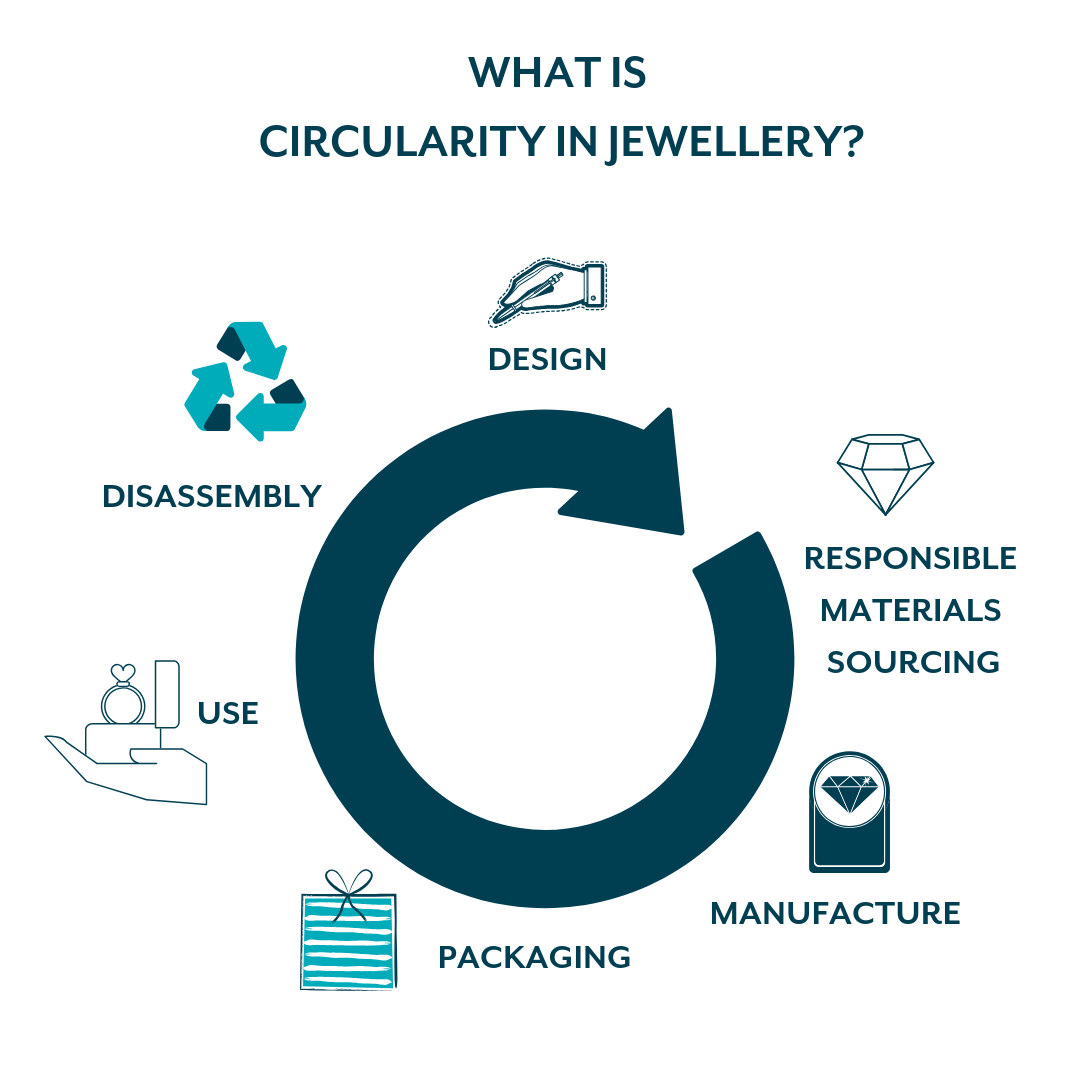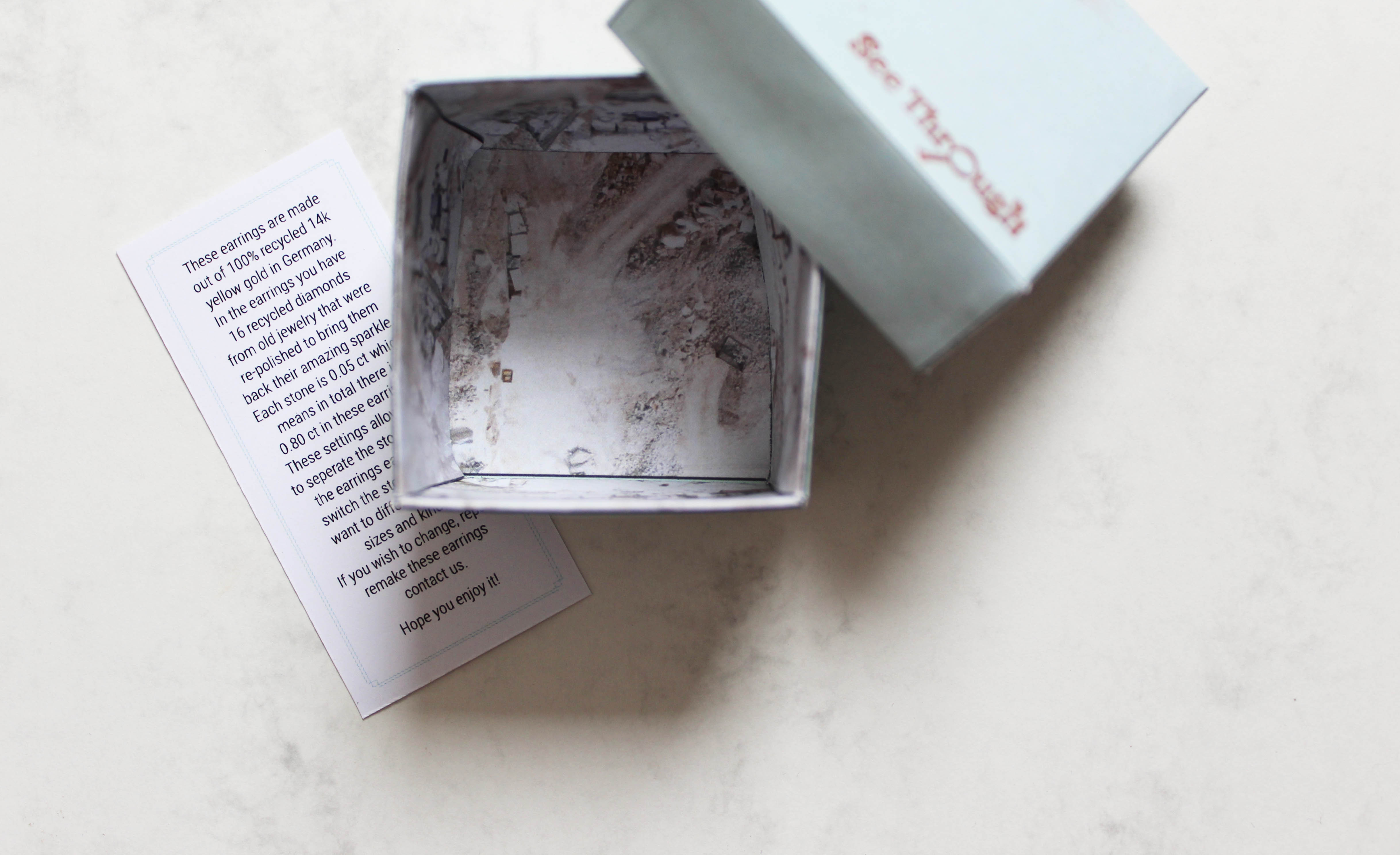Many industries are embedding circularity into product design and company operations as strategies for improving resource efficiencies, reducing carbon and water footprints, and as part of the transition to a green economy. Busy jewellers may already by buying into the circular economy, when they’re connecting to Instagram on their Fairphone or sipping a cup of Nespresso at the workbench. In this three-part series Estelle Levin-Nally and Danielle Keller Aviram consider what circularity means for jewellery and how jewellers can build circularity into their operations and product lifecycle.
In this first blog, we define circularity and what it offers to the jewellery sector at a systemic level. Our next blog "Part 2: Sustainable Design is the key to Circular Jewellery"will go into detail on sustainable design in the jewellery industry, including how it can create value in the product. Our final blog "Part 3: Circular Jewellery: An Approach to Doing Better Business" will walk you through how to build circularity into the systems and processes of the product life cycle and operations, including new business models and services.
What is circularity?
Circularity measures materials and process efficiency, i.e. the extent to which the material flows and processes of a product or company are restorative. We are all familiar with the ‘reduce, reuse, recycle’ approach to waste management. Circularity compels us to also repair, restore, recover, replace, as well as refuse, reject, and rethink as we consider how we manage materials and waste all along the product life cycle, as well as in our business processes. By paying attention to our wastes, we convert one process’s waste into an input material in the production of a different product, potentially even in a different industry. This cycling results in material and processes efficiency and flow.

By cycling and improving materials and process efficiency, businesses are better able to reduce costs and manage waste, thereby improving profits, reducing their impact on the environment and respecting human rights. A focus on circularity is a neat entry point for making your business more sustainable.
Circularity is a key concept embedded within the United Nations Sustainable Development Goals, as captured in SDG12, which aims to promote resource and energy efficiency in order to reduce economic and environmental costs.
The sustainability gains that could result from implementing circularity include:
- Lower pollution of air, water, and soil, including lower carbon emissions, thereby reducing the sector’s contribution to climate change and protecting the human right to a clean environment
- Lower water usage
- Lower production of waste, resulting in less taxation, as regulators move to penalize wasteful practices
- Protection of forests and biodiversity by reducing demand for mined materials
- Innovations in business models and processes, generating additional economic value
- Minimizing chemical usage and ensuring the safe disposal of chemicals
- Greater transparency in re-use of materials leads to greater accountability
How do we make the jewellery sector more circular as a whole?
For any sector to embrace a new way of doing business, there must be a business case and avenues for communicating the what, why and how at every applicable level. The business case for circularity is fairly clear for individual businesses due to the efficiency gains and thus cost savings that arise in many instances.
But what does this mean at the sector level? Various commercial opportunities arise, such as:
- Component manufacturers expanding their products to include components designed for inter-operability, separation, and re-use.
- New stone settings that could be easily separated to achieve a maximum materials recycling of the metals and the stones.
- Different and new aesthetics to create easier separation between diverse metals used in one item.
- The incorporation of blockchain into jewellery supply chains, unleashing the possibility of longer term tracking of items and parts as they move through various product life cycles.
- Improved traction with consumers who are hungry for authenticity and sustainability performance

Making the industry truly circular will require a reconfiguration of systems throughout the sector, not just within individual companies, as well advocacy by the trailblazers to tackle barriers and reduce costs. Constraints to sustainable design, procurement, production, and product disposal require certain economies of scale, cooperation, and undoubtedly innovation for solutions to arise and gain traction.
First and foremost, we need communication between different supply chain players, refineries, casting factories, brands, and consumers on what circularity means for each of them, and what they require from each other to achieve it. This communication would hopefully lead to a development of systems and solutions that would allow a material flow between different supply chain stages and across into other industries. In order to achieve circularity, there is a need first of all for communication between different supply chain players to create a better understanding between them about their respective abilities and limitations. Once understanding and trust is built, we can start to develop actual circular connections along the supply chain that would unblock barriers to material flow, for example when materials are received in a form that prevents the next supply chain player making use with it if it doesn't fit his machines, technology, capacity, or ability.
The urgency of climate change and unsustainable production methods means that waiting for the private sector to get its act together without additional stimulus is imprudent. Governments must do their part to put in place the right legislation and incentives that could push companies to embrace circularity in practice and across all parts of their business and to empower consumers to consume sustainably. For governments to act, we need data on the state of circularity in the jewellery sector in the major markets (US, China, India) and the progressive markets (UK, Canada, the EU) in order to make the case for action, and prioritise on what should be invested in.



